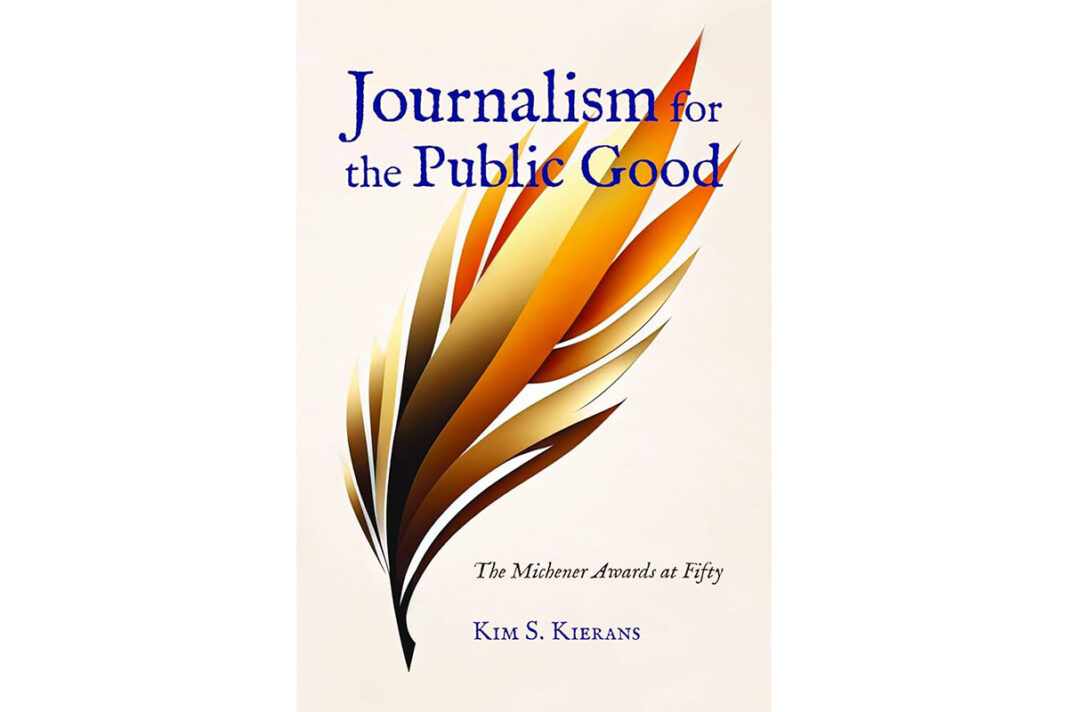A snapshot of the good that quality journalism can accomplish
TORONTO—“Thanks for the Greenbelt!”
So said Manitoulin Expositor former publisher Rick McCutcheon to Toronto Star reporter Noor Javed as she found her way out the door of Toronto’s Massey College last Thursday evening.
The “greenbelt” Mr. McCutcheon was talking about is approximately about two million acres of farmland, wetlands and forests around the Toronto area protected from development, identified and described by former premier Dalton McGuinty’s Greenbelt Protection Act, 2004.
Twenty years later, around Toronto, the word greenbelt reeks of Premier Doug Ford and political corruption.
In a private scheme designed in 2022, Premier Ford planned to open parts of the protected land to developers; some of them Ford family friends. However, on Thursday, September 21, 2023, Premier Ford took the province by surprise when he told reporters that deal was off. The Greenbelt would not be opened to development.
“I made a promise to you that I wouldn’t touch the Greenbelt. I broke that promise, and for that, I am very, very, sorry,” the premier said.

To a large degree, Premier Ford changed his mind because of the in-depth and persistent reporting of the Star’s Ms. Javed, along with her colleagues at the online news source The Narwhal. Thus, for what amounted to saving the Greebelt, the journalists won the 2023 Michener Award for Public Service Journalism; aka. Canada’s Pulitzer Prize; aka. reporting that yields positive results. In 1983, The Expositor won the Michener.
That’s why Mr. McCutcheon was in the same room as Ms. Javed. (Coincidentally, a tiny slice of the Green Belt includes the farm McCutcheon lived on as a child.)
They—joined by about 50 others, including some of Canada’s other most prominent journalists, like the CBC’s Anna Maria Tremonti, former Saturday Night magazine Editor John Fraser and former Globe and Mail editor Edward Greenspon—were at Massey College for the launch of ‘Journalism for the Public Good: the Michener Awards at Fifty,’ by Kim S. Kierans, a largely unsung but stellar Canadian journalist. She’s definitely worth a Google. And The Expositor’s achievement is recounted in colourful detail in chapter three of ‘Journalism for the Public Good.’
Thursday’s event was no self-congratulatory book launch. The two-hour discussion was more an interactive Ted talk on the seminal role that a robust fourth estate plays in democracy.
Which is also the underlying theme of Ms. Kieran’s very readable new book.
‘Journalism for the Public Good’ ought to be required reading for not only every reporter in the country but also for anybody who cares about the well-being of this country.
From the 1975 reportage of The London Free Press’s George Hutchinson and Dick Wallace of mercury poisoning on the Grassy Narrows Reserve in Northern Ontario to the courageous reporting of the Montreal Gazette’s Gillian Cosgrove who went undercover to unveil horrific living conditions and abuse of girls aged 12 to 18 at Maison Notre-Dame-de-Laval, a Montreal correction centre for girls, Ms. Kierans’ book covers major news events from the early ‘70s to today.
Ms. Cosgrove’s horrific and tragic reportage included personal accounts of torture suffered by a 14-year-old girl handcuffed and forced to lie in her own feces; a true horror story no one would have known about had it not been for the journalist’s tenacity. The coverage resulted in more than 45,000 Quebecers signing a petition and eventually led to the introduction of the Youth Protection Act and the closure of several youth correction centres.
Ms. Cosgrove, who was on hand Thursday, won a Michener in 1975. According to the book, she is still working on the story and appeared in a 2019 Fifth Estate episode called “The Forgotten Children of Marian Hall,” and she is supporting the survivors in quest for compensation.
“The story,” Ms. Cosgrove told the group Thursday, “is still going on.”
Remember the 1990s tainted blood scandal that led to more than a thousand unnecessary AIDs-related deaths? After the Globe and Mail’s extensive coverage, federal and provincial governments reversed policies, and the eventual Krever Commission yielded more than $5 billion in compensation.
The same year that The Expositor won the Michener, among the finalists was another Globe project: The story of an incarcerated Mi’kmaw man named Donald Marshall.
Five days after the Globe’s Marshall interviews appeared, the Federal Justice Minister ordered a hearing into the Marshall case and ultimately, Mr. Marshall, who spent 11 years in prison for a crime that he didn’t commit, was acquitted and released.
‘Journalism for the Public Good’ is not just a historical accounting of stories like tainted blood and pollution; the book is a rallying cry for journalists of the future, too. As was Thursday’s event.
As countless old-school journalists shrug and bemoan the loss of big-city newspapers and suppertime news broadcasts, a surprisingly optimistic Ms. Kierans says her experience and research tells another story.
Good reporting—the kind of journalism that results in democratic activity—needs investment. And the largest traditional source, i.e., advertising, has effectively evaporated. So, journalists have to create new financial models to finance their work.
The question of where revenue is going to come from to finance future journalists tasks the best minds in the business.
Meanwhile, co-operative news organizations, lean online operations like the Narwhal, and what Ms. Kierans described as “hyper-local” initiatives,” appear with increasing frequency.
“These stories will continue to be told but the platforms will be different,” she said, adding “It’s like nature,” she said, “Journalists keep popping up.”
More evidence of same?
In the audience Thursday was a friend of Ms. Kierans and the founder and CEO of a citizen-journalism startup called CITIZN, Murray Simser. Mr. Simser describes CITIZN as “not just a platform; it’s a stimulus package for the entire profession. By integrating with websites, apps and social media globally, it creates an almost limitless market for journalistic content.
“The result? A thriving expanded journalism industry where quality reporting is handsomely rewarded. It’s not just a win for journalists—it’s a win for democracy, informed citizens, and the very concept of truth in a digital age.”
“It’s like Uber for journalism,” Mr. Simser said.
As I listened to and tried to comprehend CITIZN, I recalled working at the Financial Post when reporter John Greenwood tried to sell us a on story about something called “The Internet.” I had no idea what he was talking about.
Finally.
Also present at Thursday’s book launch? The Expositor’s Julia McCutcheon. Decades earlier, her mother Alice Rutledge was chastised by the late scholar, man of letters and Massey College principal, Robertson Davies.
Rutledge’s crime?
Being female on the Massey College property.
What would Gloria Steinem say?
by Peter Carter
About the author: Peter Carter was the editor of The Manitoulin Expositor for three years, 1981 to 1983. Stories he wrote for the paper in 1982 and the community’s response to a crisis on which he reported merited The Expositor a nomination for The Michener Award for Meritorious Public Service Journalism, which ultimately was awarded to the paper. Peter attended and covered the recent launch of a new book detailing journalistic accomplishments over the past 50 years that resulted in positive responses to community concerns and where this work was recognized with Michener Award wins and finalist placements. Peter presently works as the Analysis Editor at Law360 Canada.





